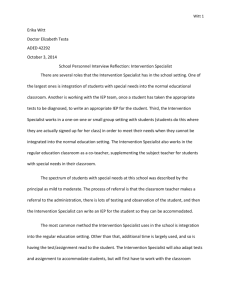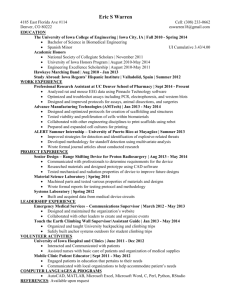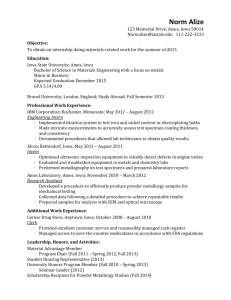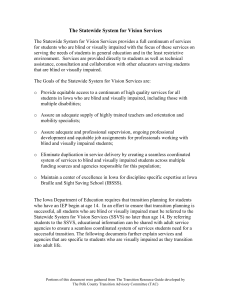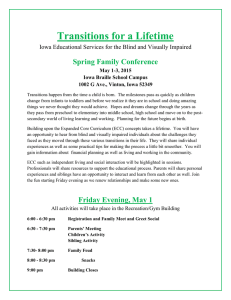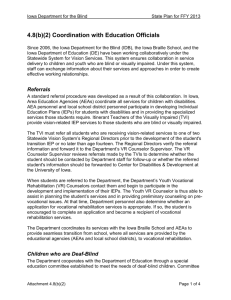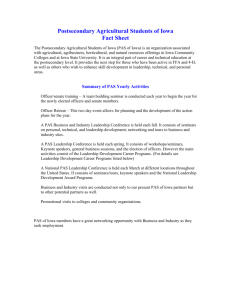Introduction to the Transition Process
advertisement
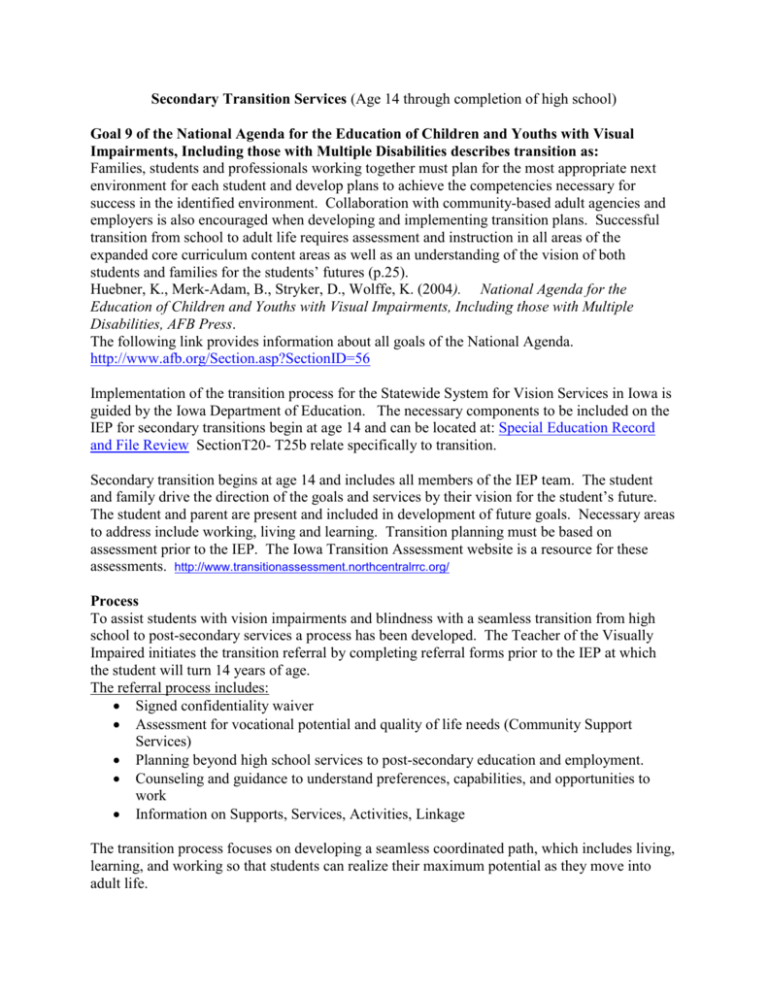
Secondary Transition Services (Age 14 through completion of high school) Goal 9 of the National Agenda for the Education of Children and Youths with Visual Impairments, Including those with Multiple Disabilities describes transition as: Families, students and professionals working together must plan for the most appropriate next environment for each student and develop plans to achieve the competencies necessary for success in the identified environment. Collaboration with community-based adult agencies and employers is also encouraged when developing and implementing transition plans. Successful transition from school to adult life requires assessment and instruction in all areas of the expanded core curriculum content areas as well as an understanding of the vision of both students and families for the students’ futures (p.25). Huebner, K., Merk-Adam, B., Stryker, D., Wolffe, K. (2004). National Agenda for the Education of Children and Youths with Visual Impairments, Including those with Multiple Disabilities, AFB Press. The following link provides information about all goals of the National Agenda. http://www.afb.org/Section.asp?SectionID=56 Implementation of the transition process for the Statewide System for Vision Services in Iowa is guided by the Iowa Department of Education. The necessary components to be included on the IEP for secondary transitions begin at age 14 and can be located at: Special Education Record and File Review SectionT20- T25b relate specifically to transition. Secondary transition begins at age 14 and includes all members of the IEP team. The student and family drive the direction of the goals and services by their vision for the student’s future. The student and parent are present and included in development of future goals. Necessary areas to address include working, living and learning. Transition planning must be based on assessment prior to the IEP. The Iowa Transition Assessment website is a resource for these assessments. http://www.transitionassessment.northcentralrrc.org/ Process To assist students with vision impairments and blindness with a seamless transition from high school to post-secondary services a process has been developed. The Teacher of the Visually Impaired initiates the transition referral by completing referral forms prior to the IEP at which the student will turn 14 years of age. The referral process includes: Signed confidentiality waiver Assessment for vocational potential and quality of life needs (Community Support Services) Planning beyond high school services to post-secondary education and employment. Counseling and guidance to understand preferences, capabilities, and opportunities to work Information on Supports, Services, Activities, Linkage The transition process focuses on developing a seamless coordinated path, which includes living, learning, and working so that students can realize their maximum potential as they move into adult life. Submit the forms to the Family Services Specialist Notify the Family Services Specialist via email when the forms are given to the parents. This is the beginning of the referral process. The referral is to the Statewide Vision System not to the Iowa Department for the Blind. It is the beginning of a process to ensure students and parents begin planning for post-secondary learning, living and working. Contact any of the individuals below for information and resources concerning the transition process. Iowa Department for the Blind Transition Specialist, Eastside Iowa Educational Services for the Blind and Visually Impaired Transition Specialist Partnerships are in place to assist with transitions for students receiving vision services. This includes the Iowa Educational Services for the Blind and Visually Impaired and the Department for the Blind with support from Area Education Agencies and Local Education Agencies. Additional information about partnership services can be found by clicking Transition Overview.




